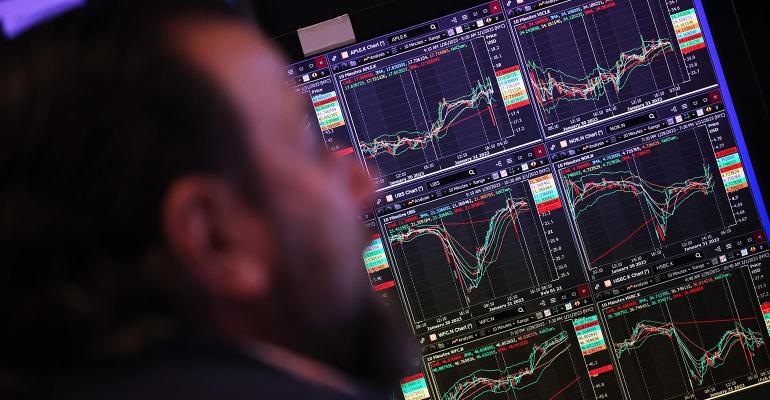(Bloomberg) -- Don’t look to US stocks for big gains next year — or for at least the next decade.
That’s the bold take from Stifel Nicolaus & Co.’s Barry Bannister, one of a few Wall Street strategists who predicted the rally in the first half of 2023. He’s doubling down on his view that returns on the S&P 500 Index, adjusted for inflation, will be roughly flat until the early 2030s against a backdrop of reinflationary economic growth. The call comes as other market forecasters turn more optimistic on US stocks for the new year.
The US equity benchmark in real terms, adjusted for Consumer Price Index inflation and with dividends reinvested, peaked at 5,300 in December 2021 and has been lower ever since — what Bannister says is a characteristic of a secular bear market.
The type of high-level S&P 500 performance seen in the decade prior to 2021, “is gone for a generation,” Bannister warned Monday in a note to clients.
Earlier this year, the strategist said the US equity gauge would stall out for the decade as the Federal Reserve returns to “policy modulation at normalized rates,” with broadly tighter financial conditions thwarting corporate earnings growth. Stifel does not expect the US central bank to cut rates in the first half of next year.
Meanwhile, Bannister upgraded his mid-year S&P 500 forecast for 2024 to 4,650 from 4,400 previously, citing “economic growth, inflation and Federal Reserve tightness all proving resilient.” The upwardly revised target still implies a meager increase of less than 2% over the next six months from where the index was trading on Monday.
As part of his view, Bannister expects mega-cap growth to lose some ground to cyclical value mid-next year. During periods of reflationary growth, value names in sectors like financials, energy and real estate tend to outperform along with small-caps and international equities, albeit with weaker overall US stock returns at the index level, he said.
Bannister was one of a handful of sell-side forecasters to accurately make a contrarian call on the US stock rally in the first part of 2023 and has since said gains would wane in the second half of the year. That projection played out during a three-month slump in stocks that began in August until the S&P 500 roared back with a 9% advance in November.
Read More:
- Morgan Stanley’s Wilson Says December to Be Rocky for Stocks
- JPMorgan’s S&P 500 Outlook for 2024 Is Grimmest on Wall Street
- After 2023 Miss, Wall Street Caves to Rally Few Predicted
His view once again makes Bannister an outlier heading into the new year. Other Wall Street prognosticators have gotten more optimistic on US stocks for next year, with firms including Bank of America Corp., Deutsche Bank AG, and RBC Capital Markets expecting the S&P 500 to hit an all-time high before 2024 closes out.
Despite the more upbeat calls, the average outlook remains guarded at only around 4,664, according to data compiled by Bloomberg.
JPMorgan Chase & Co. strategists are also skeptical, holding the most bearish outlook on US stocks among their peers going into next year. They expect the S&P 500 to drop to 4,200 by the end of 2024.
“Crucially, unlike a year ago, when almost all economists and the market pricing had recession as a base case, both are in a soft-landing camp now,” a team at JPMorgan led by strategist Mislav Matejka said Monday in a note to clients. “Perhaps one should be contrarian yet again.”





